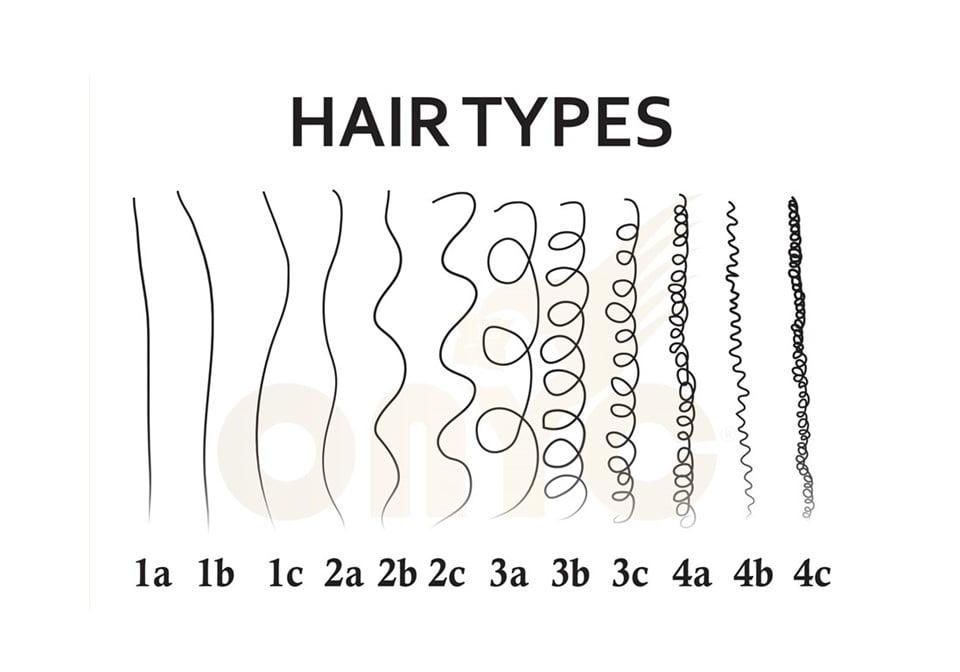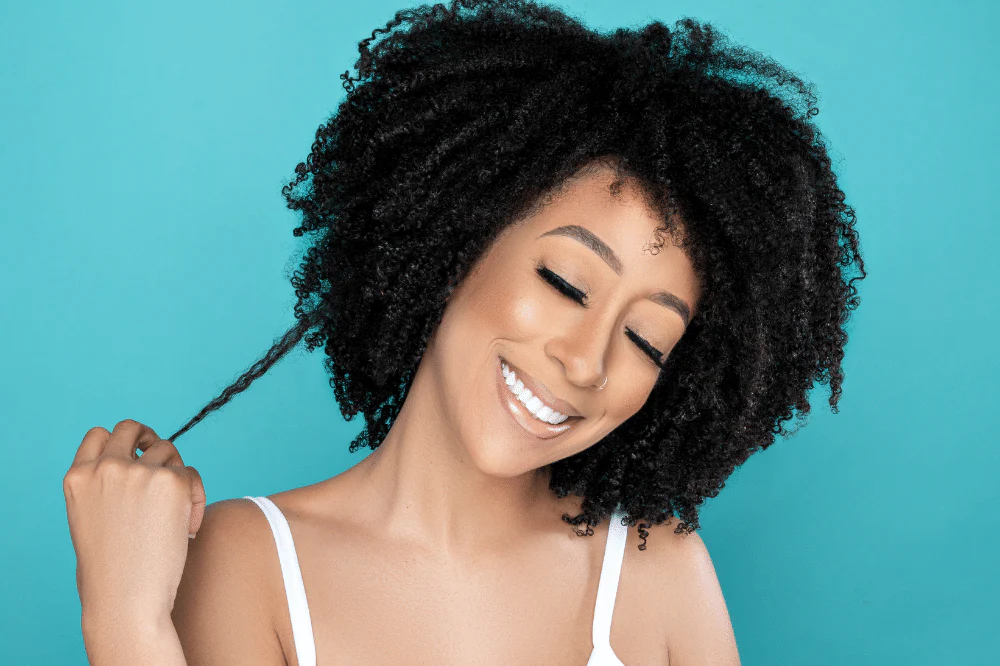so, When it comes to caring for your natural Afro hair, one of the most important things to know is your hair type. Understanding your hair type will help you choose the right products, techniques, and styles that work best for your unique hair texture. In this complete guide, we’ll explore the different types of Afro hair and how to identify which type you have.
Afro hair is known for its unique texture and curl pattern, which can range from loose waves to tightly coiled curls. This hair type is characterized by its coarseness, density, and tendency to be dry. Because of its unique characteristics, Afro hair requires special care and attention to keep it healthy and looking its best.
3 Afro Hair Types: 4A, 4B, and 4C.
These hair types are defined by the tightness of their curl pattern, which can range from a loose S-shape to a tightly coiled Z-shape.

4A Hair Type
The 4A hair type is characterized by a well-defined S-shaped curl pattern that is tightly coiled. This hair type has a natural sheen and is relatively easy to maintain. It is also one of the most versatile hair types, as it can be straightened, curled, or worn in its natural state.
4B Hair Type
The 4B hair type is characterized by a tight, Z-shaped curl pattern that is more densely packed than the 4A type. This hair type is prone to dryness and shrinkage and requires extra care to maintain its health and prevent breakage. It is also one of the most fragile hair types, as its curls are tightly coiled and prone to tangling.

4C Hair Type
The 4C hair type is characterized by a very tightly coiled Z-shaped curl pattern. This hair type is the most fragile and requires the most care to maintain its health. It is prone to dryness, breakage, and shrinkage and can be difficult to style. However, with the right care, 4C hair can be beautiful, healthy, and strong.

Identifying Your Hair Type
To identify your hair type, start by examining the texture and curl pattern of your hair. Afro hair can range from a fine, soft texture to a coarse, wiry texture. Look at the shape of your curls and the tightness of the curl pattern to determine which hair type you have.
You can also use the strand test to determine your hair type. Take a single strand of hair and examine its texture, curl pattern, and elasticity. If your hair has a well-defined S-shaped curl pattern, you likely have 4A hair. If your hair has a tightly coiled Z-shaped curl pattern that is densely packed, you likely have 4B hair. Also, If your hair has a very tightly coiled Z-shaped curl pattern that is prone to shrinkage and tangling, you likely have 4C hair.
Caring for Your Hair Type
Once you have identified your hair type, it’s important to care for it properly to keep it healthy and looking its best. Here are some tips for caring for each hair type:
4A Hair Care
- Wash your hair once a week with a sulfate-free shampoo
- Use a deep conditioner or hair mask once a week to moisturize your hair
- Use a leave-in conditioner to help detangle your hair and protect it from breakage
- Avoid using heat styling tools too often, as they can damage your hair
- Use a wide-tooth comb or your fingers to detangle your hair
4B Hair Care
- Wash your hair every 7-10 days with a sulfate-free shampoo
- Use a deep conditioner or hair mask once a week to moisturize your hair
- Use a leave-in conditioner to help detangle your hair and protect it from breakage
- Seal in moisture with a natural oil or butter, such as shea butter or coconut oil
- Avoid using heat styling tools too often, as they can damage your hair
- Use a wide-tooth comb or your fingers to detangle your hair
4C Hair Care
- Wash your hair every 7-10 days with a sulfate-free shampoo
- Use a deep conditioner or hair mask once a week to moisturize your hair
- Use a leave-in conditioner to help detangle your hair and protect it from breakage
- Seal in moisture with natural oil or butter, such as shea butter or coconut oil
- Avoid using heat styling tools too often, as they can damage your hair
- Use a wide-tooth comb or your fingers to detangle your hair
- Protect your hair at night by wearing a satin or silk bonnet or using a satin or silk pillowcase
No matter what hair type you have, it’s important to listen to your hair and adjust your hair care routine accordingly. Some people may need to wash their hair more or less often, while others may need to use different products or techniques to achieve the best results. Don’t be afraid to experiment and try new things to find what works best for your hair.
Conclusion
In conclusion, understanding your hair type is an important step in caring for your natural Afro hair. By identifying your hair type and following the proper care routine, you can keep your hair healthy, strong, and looking its best. Whether you have 4A, 4B, or 4C hair, with the right care and attention, you can embrace your natural hair texture and feel confident in your own skin.

